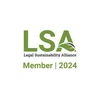Everyone, especially those working in the ‘creative industries’, will undoubtedly have heard of ‘copyright’ — but could you actually explain what it is?
#
Copyright can often be misunderstood, so here’s a quick guide to the basics and why you need to be aware of it.
What is copyright? #
Copyright is a legal right which enables its owner to prevent others from copying their work without permission. Copyright exists in works which are original and have been created as the result of some skill, labour or judgement being exercised by the author.
See more frequently asked questions on our FAQs: Copyright page.
What does copyright protect? #
The types of work protected by the law of copyright are wide and varied, and include:
- literary works such as books, manuscripts, computer programs, manuals, articles, newsletters or website content
- dramatic works such as plays or dance routines
- musical works such as music or scores
- artistic works such as paintings, photographs, advertisements, sculptures, architecture, technical drawings, maps or logos
- typographical arrangements in the form of magazines or periodicals
- audio-visual recordings such as music recordings, films, broadcasts.
It’s common for a complete project to consist of multiple elements. Each of these is protected by copyright independently. Take a webpage as an example — the imagery will be protected as artistic works, the content and underlying code as literary works.
Who owns copyright? #
The first owner of a copyright work is the author — the person who created the work. The principal exception to this is when the author is employed and the work was created in the course of their employment. In this situation, the first owner of the copyright will be the employer. Where a work is commissioned or the author is a freelancer, the copyright will remain with the author unless there is an agreement in place to the contrary. The owner of a copyright work may decide to licence or sell the work to a third party.
How creative do I have to be to create a copyright work? #
On the face of it, this seems like an easy question to answer — but if we scratch beneath the surface, things get murkier. This matters when you need to consider who owns the rights to a particular creative work, since the first port of call is ‘does copyright even subsist in the work?’.
In the UK, the legal test for an artistic or literary work to qualify for copyright protection is it must be ‘original’. This means that it must not have been copied and must have resulted from the author’s sufficient skill, labour and judgement. A work doesn’t have to be unique to qualify for copyright protection.
Traditionally, the level of skill, labour and judgement needed for a work to qualify for copyright protection was low (but not insubstantial). Relatively mundane works have been protected through copyright law in the UK including railway timetables, football fixture coupons and simple logos.
More recently, the courts have considered a harmonised European approach based on whether a work is an expression of its author’s own intellectual creation. This requires the author to make “free and creative choices” and the work to carry the “personal touch” of its author. Copyright only subsists in works that are creative.
What isn’t protected by copyright? #
The law of copyright protects the manifestation (or interpretation) of an idea — not the idea itself. For example, the idea for a book isn’t subject to copyright protection, but the actual manuscript is. Copyright couldn’t be used to stop you from writing a book about a boy wizard who goes to a school for wizards and witches — but it would prevent you from writing the story of Harry Potter.
In practical terms, copyright doesn’t subsist in names, titles or short phrases. It does exist in a logo, block of original text or photograph, or any combination thereof. So while the threshold for copyright subsistence isn’t high, it’s important to remember that some creative works won’t qualify for copyright protection. In that situation, particularly when considering product or brand names, your focus should be on whether the name is suitable for trade mark protection.
Copyright applies automatically #
Unlike other forms of intellectual property protection, copyright comes into existence automatically once a work is created (even before it’s finished), so you don’t have to register it. It’s good practice to mark copyright works with the copyright symbol ©, your name and the date of creation.
You may also want to keep a physical record of your work. One way to do this is to send a copy of the completed work (and any drafts) to yourself via registered post, leaving the envelope unopened. The date stamp acts as evidence of the date of creation. If you use a computer to create a work, computer files include embedded dates of creation.
How long does copyright last? #
The duration of copyright in a work is determined by the type of work but can last for 70 years following the death of the author.
| Type of work | Duration |
| Literary, dramatic, musical or artistic | 70 years after the death of the author |
| Sound recordings | 70 years after the date of first release |
| Films | 70 years after the death of the last principal director, author or composer |
| Magazines | 25 years after first publication |
| Broadcasts | 50 years from the date of first broadcast |
If the author of a work is unknown, copyright will last for 70 years from end of the calendar year in which the work was created or first published/released.
How am I protected by copyright? #
Copyright gives the owner the exclusive right to use the work. This includes the right to prevent others from copying it; renting, lending or issuing copies of it to the public; performing it in public or adapting it without your permission.
The author of the work may have certain moral rights, including the right to be identified as the author and to object to derogatory treatment of the work.
If you own the copyright in a work, it’s your responsibility to ensure that your rights aren’t infringed. This requires you to ‘police’ your copyright work and take civil action against others who copy, adapt, publish, rent, perform or broadcast it.
If you need copyright-related advice, feel free to get in touch with us.





















